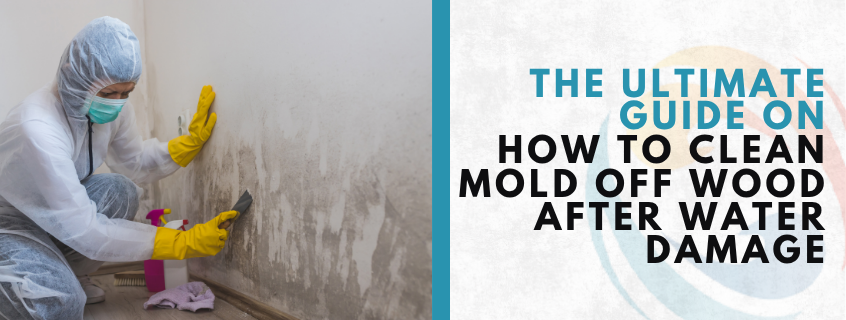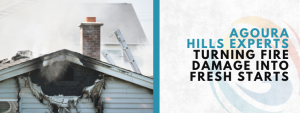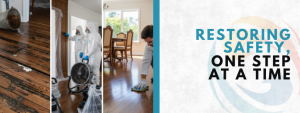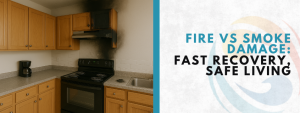When water damage hits your home in Los Angeles, it’s more than just a temporary inconvenience it can lead to long-term issues like mold growth. Wooden surfaces, in particular, are highly vulnerable after leaks or flooding. Mold not only spoils the appearance of your furniture or floors but also weakens your home’s structure and affects air quality. Knowing how to clean mold off wood after water damage is essential to protecting your property, health, and peace of mind.
This detailed guide covers everything from identifying early mold signs to the most effective cleaning methods, mold prevention, and when to call certified restoration experts for help.
Understanding Mold Growth After Water Damage
Moisture is the main culprit behind mold formation. When wood absorbs water, it creates the perfect environment for spores to thrive. Within 24 to 48 hours after a water incident, mold can begin spreading unseen through the wood grain.
Common Causes of Mold Growth
- Flooding or leaks: Persistent moisture left behind after storms or plumbing issues.
- Roof or window leaks: Rainwater seeping into wooden structures.
- Poor ventilation: Limited airflow in basements, bathrooms, and attics.
- High humidity: Warm climates increase indoor moisture levels.
Why Mold Targets Wood
Wood provides both nutrients and moisture retention. When wet for extended periods, it supports continuous mold growth. This is why addressing water damage promptly is crucial to prevent a recurring problem.
Early Signs of Mold on Wood
Identifying mold early saves you from expensive repairs later. Mold doesn’t always appear in obvious spots it can grow underneath finishes, behind walls, or under wooden flooring.
Key Warning Signs
- Discoloration: Black, green, or white specks on wood surfaces.
- Earthy odor: A damp, musty smell even after the area has dried.
- Soft or warped wood: Indicates prolonged moisture exposure.
- Allergic reactions: Sneezing, coughing, or watery eyes near affected areas.
Los Angeles Hotspots for Mold
Homes in Los Angeles with basements, crawl spaces, or older plumbing systems are particularly at risk. Regular inspections help detect moisture buildup before it turns into a major issue.
Step-by-Step: How to Clean Mold Off Wood After Water Damage
If you’ve experienced flooding or leaks, acting fast is key. For effective results, follow this process to remove mold safely while protecting your home and health. Partnering with Water Damage Restoration Los Angeles professionals can ensure thorough remediation and prevent future mold growth.
What You’ll Need
- Rubber gloves, goggles, and a mask
- Soft-bristle brush or sponge
- Vacuum with HEPA filter
- Vinegar, detergent, or bleach
- Fans and dehumidifiers
Cleaning Process
- Dry thoroughly: Eliminate all standing water and reduce humidity with fans and dehumidifiers.
- Vacuum loose spores: Use a HEPA-filter vacuum to contain mold spores safely.
- Apply cleaning solution:
- Light mold: Mix dish soap and warm water.
- Moderate mold: Spray vinegar directly and let it sit for an hour.
- Severe mold: Combine one cup of bleach per gallon of water.
- Scrub gently: Use circular motions with a soft brush; avoid soaking the wood.
- Rinse and dry: Wipe the surface clean and ensure no moisture remains.
- Sand and refinish: Lightly sand to remove stains, then refinish to protect the wood.
Long-Term Mold Prevention After Water Damage
Once you’ve learned how to clean mold off wood, the next crucial step is keeping it from coming back. Prevention is much easier and cheaper than full remediation.
Tips for Mold Prevention
- Control humidity: Maintain indoor humidity levels below 50%.
- Ventilate properly: Use exhaust fans in kitchens, bathrooms, and laundry areas.
- Inspect regularly: Check hidden areas like basements and attics monthly.
- Apply protective coatings: Seal wooden surfaces with moisture-resistant finishes.
Prevent Mold After Water Damage with Smart Habits
- Wipe spills quickly and dry wet surfaces.
- Schedule annual maintenance for your HVAC and plumbing systems.
- Use dehumidifiers during humid summers.
- Invest in mold-resistant paints for vulnerable rooms.
By practicing consistent strategies for preventing mold after water damage, you can protect your property from recurring problems.
Understanding the Different Types of Mold
Not all molds are created equal; some are harmless, while others are highly toxic. Recognizing which type you’re dealing with helps determine the best cleaning or professional approach.
Description List:
- Aspergillus: Common in damp indoor environments; may trigger allergies.
- Cladosporium: Found on wood and fabrics; causes respiratory irritation.
- Stachybotrys (Black Mold): Dangerous and toxic, linked to prolonged water exposure.
- Penicillium: Spreads quickly on wooden furniture and floors.
Safeguard Your Space After Water Damage
Living in Los Angeles comes with its share of humidity and occasional water exposure, making it essential to know how to clean mold off wood after water damage and practice effective mold prevention after water damage strategies. Acting quickly, thoroughly drying affected areas, and involving professional restoration when necessary can help protect your property and maintain a healthy living environment.
For extensive mold infestations, whether covering large areas or deeply embedded in structural wood, it’s best to contact local water damage experts. These professionals provide 24/7 restoration service, ensuring mold is removed safely and your home is restored efficiently, keeping it clean, dry, and mold-free.
FAQs About Mold and Water Damage
1. Can I use vinegar instead of bleach to remove mold?
Yes. Vinegar is a natural, non-toxic option that effectively removes about 80% of mold species. It’s safe for most wooden surfaces.
2. How soon does mold grow after water damage?
Mold can appear within 24 to 48 hours, depending on temperature and humidity. Quick drying prevents extensive growth.
3. Is mold on wood dangerous?
Yes. It can cause respiratory issues, allergies, and structural weakening if untreated.
4. Should I replace wood with mold damage?
If mold has deeply penetrated or the wood is soft and brittle, replacement might be necessary.
5. How can I prevent mold in the future?
Monitor moisture levels, fix leaks immediately, and keep indoor air circulating. Regular checks by restoration experts are also recommended.







